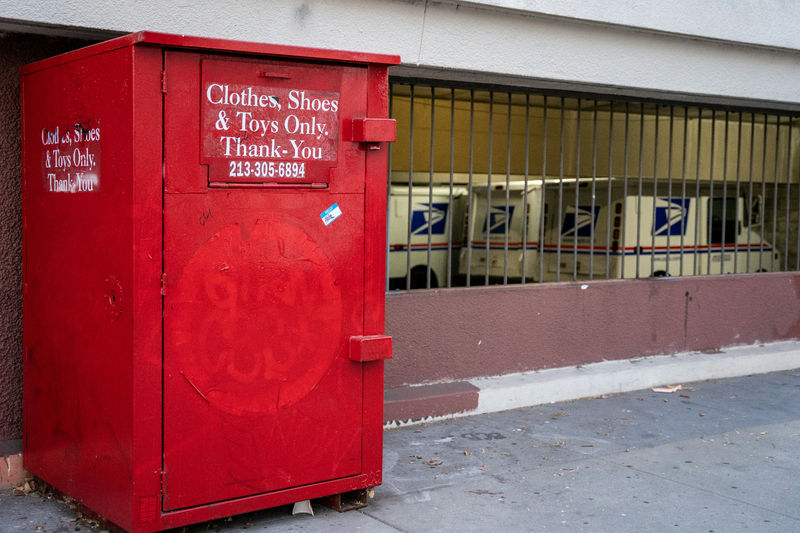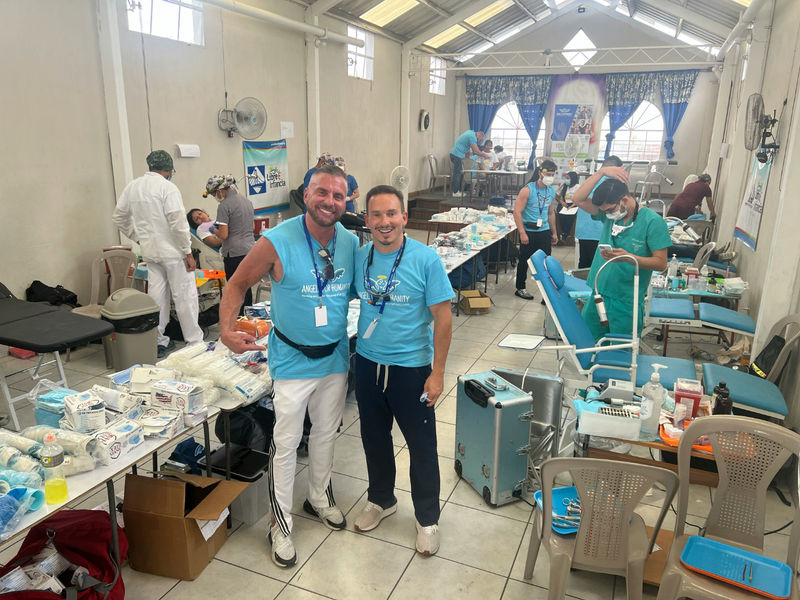A Guide to Corporate Giving: Strategies, Benefits, & Tools
A complete guide to corporate giving. Explore the benefits, types of CSR programs, strategies, examples, and tools to help brands maximize their impact.
 Published at: Updated at:
Published at: Updated at:Understanding Corporate Giving and Its Importance
Recent trends show that corporate giving is no longer just a nice-to-have; it’s becoming a core part of business strategy. According to a 2023 article from MIT Sloan Management Review, U.S. corporate philanthropy spending hit over $21 billion in 2021, marking a whopping 24% increase from the previous year. This isn’t just a number; it’s a clear signal that companies are waking up to the fact that a solid corporate giving program benefits not just the community but their bottom line too.
What is Corporate Philanthropy?
Corporate philanthropy isn’t just a buzzword; it’s a powerful force for good. It’s all about the contributions businesses make to charitable causes and nonprofit organizations. Think of it as the business world’s way of giving back, and it can take many forms—monetary donations, in-kind support, employee volunteerism, and even event sponsorships.
Take a look at companies like Coca-Cola, Google, and Walt Disney. They show us that being a good corporate citizen is about more than just writing a check; it’s about building sustainable partnerships and impactful community relationships. For example, Coca-Cola doesn’t just throw money at a problem; they run sponsorship programs that not only provide financial support but also promote health initiatives in communities. Now that’s what I call a win-win!
Insight: Corporate philanthropy is not just about charity; it's a strategic move that benefits both businesses and communities.

Exploring the Key Types of Corporate Giving Programs
Corporate giving programs come in various forms, each designed to align with an organization’s values, goals, and community engagement strategies. Understanding the different types can help businesses select the best approach for their corporate social responsibility (CSR) initiatives. Here are eight of the most common types of corporate giving programs:
1. Monetary Donations
This is the most traditional form of corporate giving, where businesses provide direct financial support to nonprofits, charities, or community organizations. Monetary donations often target causes that resonate with the company’s mission and values.
2. In-Kind Donations
In-kind donations involve giving goods or services instead of money. This can include donating products, offering professional expertise, or providing free access to company resources. For example, a software company might donate licenses to nonprofits or a construction firm may offer materials for community projects.

3. Employee Matching Gifts
Employee matching gift programs encourage staff to contribute to charitable causes by matching their donations dollar-for-dollar. This not only amplifies the impact of individual donations but also boosts employee engagement and morale.
4. Volunteer Programs
Volunteer programs enable employees to dedicate their time and skills to community service initiatives. Companies may offer paid volunteer days, organize group volunteering events, or encourage ongoing participation in charitable activities.
5. Sponsorships
Corporate sponsorships involve providing financial or resource support to specific events, programs, or organizations in exchange for brand visibility or community goodwill. These partnerships often align with a company’s branding and marketing objectives.

6. Grant Programs
Grant programs allow organizations to provide structured funding opportunities to eligible nonprofits or community projects. These programs typically involve an application and review process to ensure funds are allocated to causes that meet the company’s criteria.
Resource: Learn how grant management platforms simplify CSR programs, enhance efficiency, and boost overall impact.
7. Scholarship Funds
Some companies establish scholarship programs to support education within their communities. These initiatives often target specific demographics, such as underserved students or individuals pursuing careers in industries relevant to the business.
8. Cause-Related Marketing
In this program, businesses partner with a cause or nonprofit organization to promote a specific initiative. A portion of the proceeds from product sales or services is donated to the cause, creating a win-win scenario for the company and the community.

Benefits of Implementing a Corporate Giving Strategy
Implementing a corporate giving strategy isn’t just a nice gesture; it’s a smart business move. For companies, engaging in philanthropy can boost their reputation, lift employee morale, and strengthen customer loyalty. When businesses contribute to community causes, they often enjoy a positive image that attracts customers who care about socially responsible brands.
A study highlighted in Harvard Business School found that 77% of consumers are motivated to purchase from companies committed to making the world a better place. That’s a compelling reason to get involved!
Here are five key benefits of a corporate giving strategy:
Improved Brand Reputation: Businesses known for supporting meaningful causes are often viewed as trustworthy and ethical, enhancing their reputation among consumers and stakeholders.
Increased Employee Engagement: Philanthropy fosters a sense of purpose within the workforce, boosting employee satisfaction and loyalty while attracting talent who value working for socially responsible employers.
Stronger Customer Loyalty: Consumers are more likely to support businesses that align with their personal values, leading to increased sales and brand advocacy.
Tax Benefits: Donations to qualified charitable organizations can be deducted from taxable income, reducing a company’s overall tax liability. This includes monetary gifts, in-kind contributions, and even volunteer hours in some cases.
Stronger Community Relationships: By investing in local causes, companies build stronger ties with the communities they serve, fostering goodwill and long-term support.
By nurturing a culture of giving, brands can align their philanthropic efforts with their core values, leading to mutually beneficial relationships that amplify social impact.

How Nonprofits Benefit from Corporate Giving Partnerships
On the nonprofit side, corporate philanthropy provides essential funding that can enhance programs and drive mission-based initiatives. Plus, partnerships with corporations can open new channels of support and awareness, as businesses often bring vast networks and resources that nonprofits can tap into. Together, these benefits create a powerful cycle of support and impact, reinforcing the importance of a well-structured corporate giving program.
The Difference Between Corporate Giving vs Personal Donations
So, what’s the difference between corporate giving and personal donations? It boils down to structure and intent. Personal donations are often acts of generosity from individuals, while corporate giving is usually strategic and part of a larger CSR plan.
Now, let’s break down what we mean by a donation in the corporate world. It’s essentially a voluntary transfer of resources or funds from a corporation to a nonprofit or community project, all aimed at advancing a specific cause or mission. Businesses often view donations through the lens of corporate social responsibility, which is a fancy way of saying they want to do good while looking good.
Corporate donations can tap into more substantial financial resources, reach a wider audience, and are often linked to specific business outcomes or community impacts. Plus, many companies match their employees’ personal donations, effectively doubling the impact of those philanthropic efforts. According to a report by ReCharity, over 84% of donors are more likely to give if they know their company will match their contributions. That’s some serious motivation!

Summary: While individual donations are often spontaneous acts of kindness, corporate donations are usually part of a structured giving program. It’s like having a plan for your generosity—because who doesn’t love a good strategy?
Creating a Process for Handling Donation Requests
When it comes to corporate social responsibility, having a streamlined process for handling donation requests is essential. With so many organizations vying for attention (and funding), a structured approach helps businesses prioritize and evaluate requests based on their core values and goals.
A Step-by-Step Process for Managing Donation Requests
Managing donation requests is about creating an efficient, organized system that benefits both the brand and the requesting organizations. For businesses, this means establishing clear criteria, automating workflows, and leveraging technology to handle the influx of proposals. Here’s a breakdown of the main steps in the process:
Centralize Requests: Use a single platform like Touchstone™ to collect and manage all proposals in one place.
Set Criteria: Define clear guidelines for evaluating requests based on alignment, impact, and budget.
Automate Submissions: Simplify applications with standardized online forms to gather necessary details.
Review and Score: Evaluate proposals objectively using automated tools and predefined criteria.
Respond Promptly: Send automated acknowledgments and timely follow-ups to maintain transparency.
Allocate Strategically: Distribute funds based on evaluation scores and corporate giving goals.
Track and Monitor: Maintain records of approved donations and their outcomes.
Analyze ROI: Generate reports to assess the effectiveness and impact of your giving strategy.
Share Impact: Communicate results with stakeholders to highlight your brand’s commitment to CSR.
Refine the Process: Continuously improve your approach for efficiency and better outcomes.
Takeaway: This is a simple example of the process brands can follow to manage donation requests effectively. Utilizing a structured approach makes managing donations simple, fair, and effective.

Elevate Your Corporate Giving Strategy with Touchstone™
Touchstone™ isn’t just another tool; it’s a game-changer for corporate giving. Our all-in-one sponsorship management software simplifies the donation management process by centralizing sponsorship proposals, grants, and charitable requests into a single, user-friendly system. With Touchstone™, brands can efficiently handle incoming requests, saving time, reducing administrative burdens, and ensuring every proposal aligns with their values and goals. It’s a smarter, more effective way to manage donations while maximizing the ROI based on your companies predefined criteria.
The Role of Technology in Corporate Giving
In today’s digital age, technology is revolutionizing charitable giving. Platforms like Touchstone™ harness automation to streamline operations, improve decision-making, and simplify donor engagement. According to a white paper by Foundation Source, automation doesn’t just simplify your life; it also cuts costs, allowing nonprofits, brands, and organizations to channel more resources into their missions.

Streamlining Donation Requests with Online Portals
Online submission portals enhance efficiency by acting as secure, centralized entry points for charitable requests, improving the process for both brands and applicants. For brands, online submission portals are more than just administrative tools—they serve as bridges to meaningful partnerships. These platforms provide nonprofits, charities, and community organizations with a professional, streamlined way to submit their requests.
A well-designed portal offers the following advantages:
Centralized Access: All requests are collected in a single, secure location, making management simple and organized.
Streamlined Submissions: Standardized forms ensure consistency and gather the necessary information upfront.
Efficient Review: Automated tools sort and score requests, accelerating the evaluation process.
Touchstone™ integrates these features into a unified platform, enabling brands to streamline their giving programs, strengthen relationships with nonprofit organizations, and maximize the impact of their philanthropic efforts.
Resource: Need help refining your process for evaluating charity and donation requests? Read our article: How to Evaluate Sponsorship Proposals, for useful frameworks and practical strategies.
Aligning Corporate Values with Charitable Partnerships
Aligning your corporate values with charitable efforts isn’t just a nice-to-have; it’s a game changer for your brand reputation and trust with stakeholders. Did you know that 7 out of 10 consumers prefer to buy from companies that are socially responsible? (Think NPC).
When companies choose charitable partnerships that resonate with their mission and values, they not only amplify their social impact but also boost their internal culture and employee satisfaction. It’s a win-win!

Examples of Successful Corporate Partnerships
Let’s look at an excellent example of a successful corporate-charity partnership: Boots (pharmacy) and Macmillan Cancer Support (charity). This collaboration benefits both parties—a pharmacy supporting cancer patients enhances its brand reputation, while the charity expands its outreach. It’s a perfect match that improves community health and fosters a caring image (Boots). Such strategic alliances demonstrate how businesses can engage meaningfully while aligning their strengths with social causes.
How to Say No to Donation Requests Politely?
Now, let’s tackle the elephant in the room: how to say no to donation requests without feeling like the villain in a movie. It can be tricky, but it’s all about handling it with grace. Start by expressing genuine appreciation for the organization’s work, then provide a clear explanation of your budget constraints or shifting focus.
It’s important to keep the door open for future interactions, suggesting that you’ll keep them in mind for potential support down the line. Ultimately, maintaining professionalism and empathy helps organizations navigate the delicate landscape of corporate giving while staying true to their charitable missions.
Key Takeaways
Corporate giving is more than just a goodwill gesture—it’s a strategic advantage that enhances brand reputation, strengthens customer and employee loyalty, and creates lasting community impact. With various programs like monetary donations, volunteer initiatives, and sponsorships, businesses can align their philanthropic efforts with their values and goals.
Technology, such as Touchstone™, streamlines the sponsorship management process by centralizing requests, automating workflows, and fostering transparency, making corporate giving more efficient and impactful. By building meaningful partnerships and adopting a structured approach, companies can maximize their social impact while driving business success.

Maria Fernanda Valverde Font is a Sponsorship Senior Consultant, Analytics and Insights at Lumency, a global sponsorship marketing consultancy trusted by leading brands like PepsiCo, Nestlé, and Canadian Tire. As a sports marketing specialist, Maria creates impactful campaigns that empower people and help brands and non-profits achieve their goals. She contributes her expertise to shaping Touchstone™, Lumency's innovative sponsorship management platform. Passionate about sharing her knowledge and experience, Maria helps brands craft tailored strategies that drive meaningful results.




